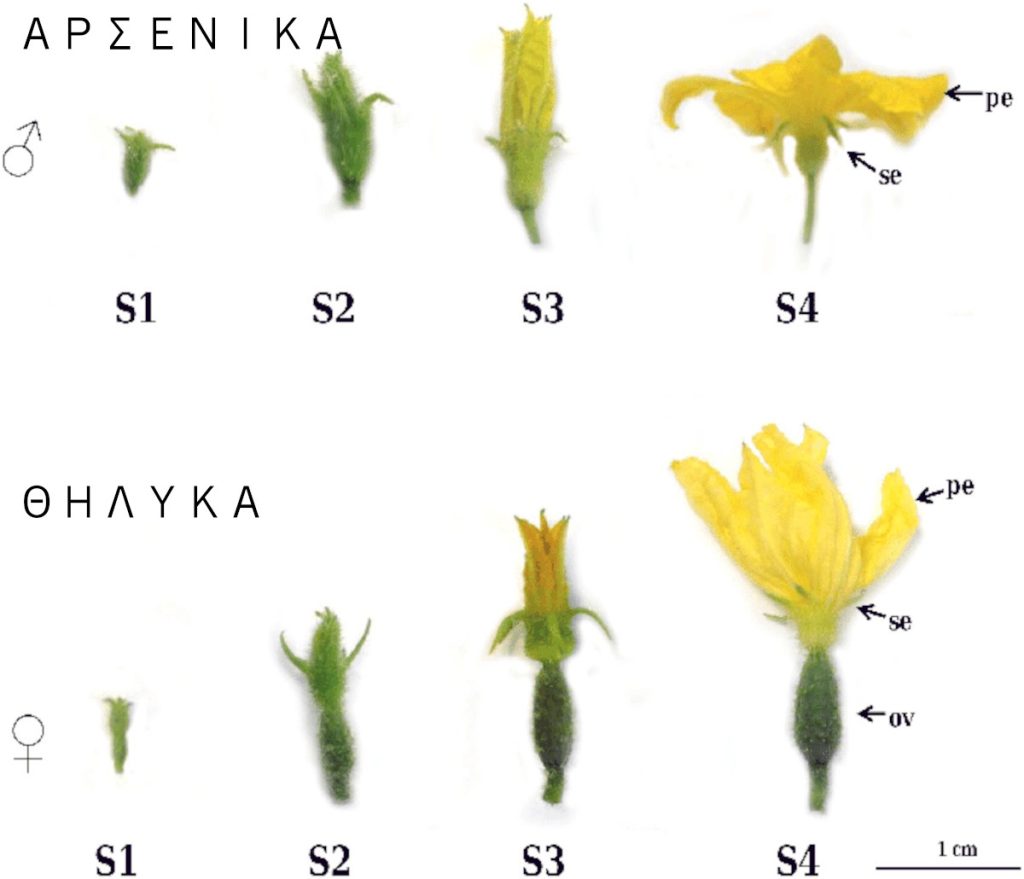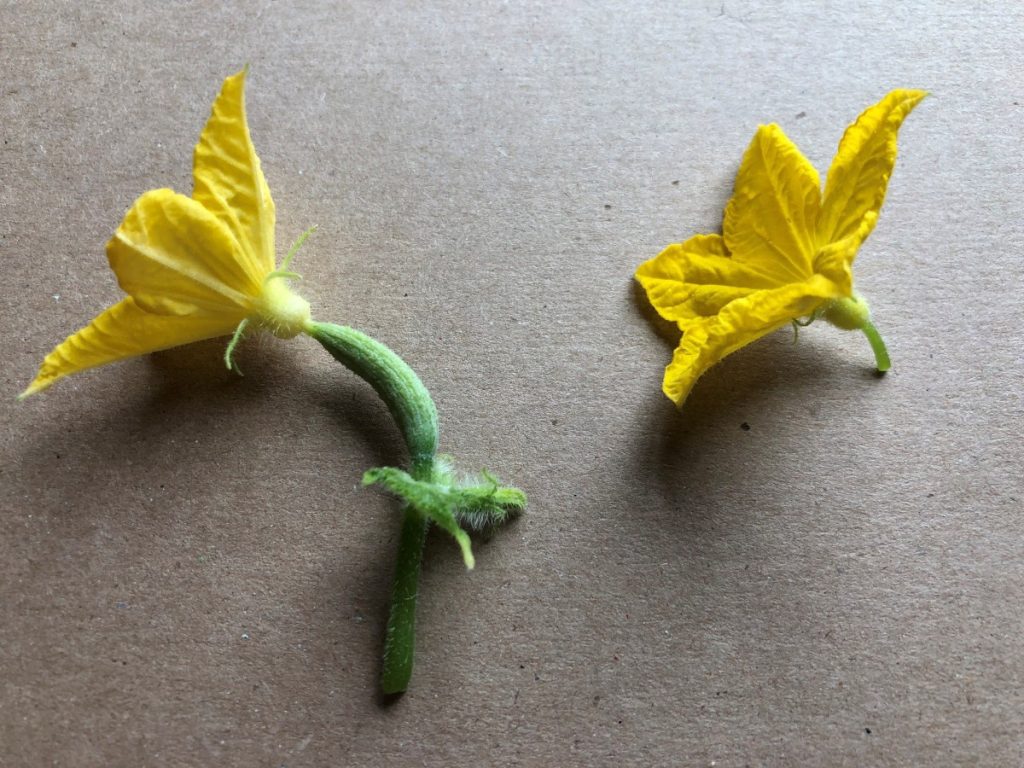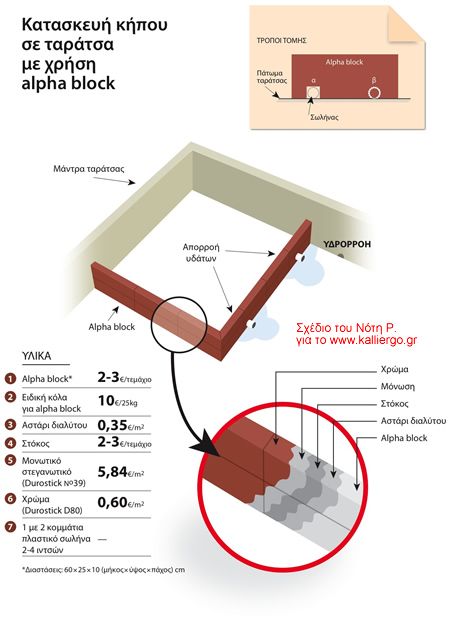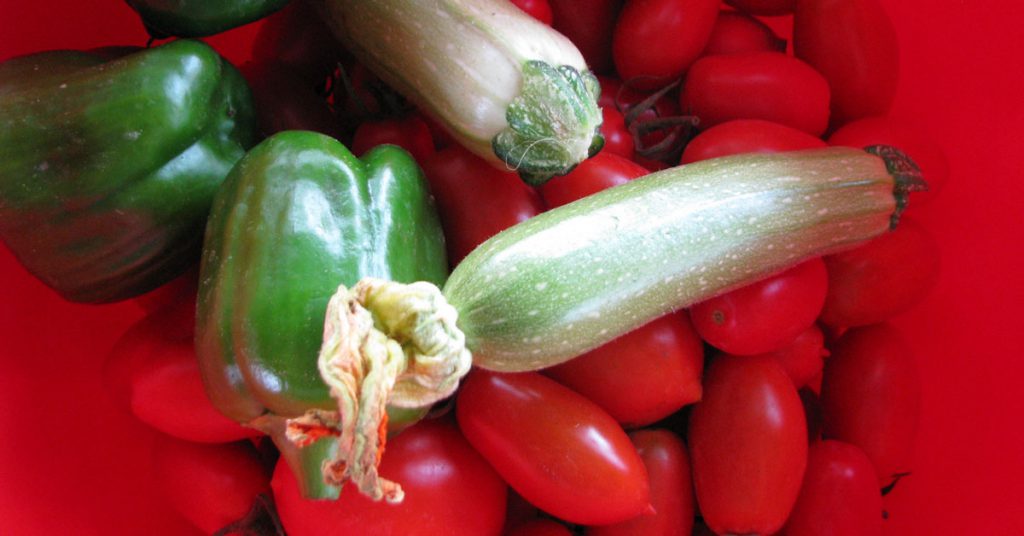Many people do not know that the cucumber plant has both male and female flowers.
With the help of insect pollinators, the female flowers are pollinated by pollen carried to them by the male flowers.
It is the female flowers that give us cucumbers.
If, for whatever reason, there is no pollination, what we observe as growers is that the cucumber plant has flowers but does not produce cucumbers. The flowers grow, turn yellow and wither to no avail.
How do we tell the male from the female flowers in cucumber?
The separation, as the picture below shows, is easy.

Figure 1: Stages of male and female flower development in a single cucumber in vitro. The stages are as follows:
S1, closed sepals
S2, emerged green petals
S3, yellow petals
S4, full flowering
pe, petals
se, sepals
ov, ovary
The female cucumber flowers, have an ovary at the bottom, which many people mistake for little cucumbers, but which are not.
And if the image above is confusing, you can see the following image which clearly shows the male and female flowers on a cucumber.

What happens if the female cucumber flower is not fertilized?
If the female cucumber flower is not fertilized, then the yellow flower withers. The ovary underneath turns yellow and withers.
It is precisely this withering of the ovary (which looks like a small cucumber) that confuses many growers.
They think they are being wilted and yellowed by the cucumbers.


How to make the cucumber produce more cucumbers?
If you see the “little cucumbers” (the ovaries of female flowers) wilting without developing into cucumbers, then there is something very simple you can do.
It’s called artificial insemination.
You can artificially inseminate cucumbers in the following simple way.
Take a small brush and use it to transfer pollen from the male flowers to the female flowers.
With gentle movements, put the brush hairs on the male flower so that pollen is attached to them. Then do the same on a female flower so that pollen from the male flower is transferred to them.
From there, nature will take over to complete the task and make the plant produce cucumbers.
So you will have a large production of cucumbers!
Monocot, Monocot Monoclinic, Monocot Diclinic, Dioecious
The magical Greek language helps us to characterize plants based on the characteristics of their flowers.
Reading the following brew, you will be impressed, as I was, at how logical the nomenclature is.
Amonoecious (etym. single + ocus) plant is one that has both male and female flowers on the same individual.
If the flowers are hermaphroditic it is also called a monocot (one bed – one bed) i.e. monoecious monoecious.
If the male and female flowers are in different places (but always on the same plant) it is also called biclinic (two beds), i.e. monoecious biclinic.
Dioecious (etym. two + houses) is called a plant that has different individuals for each sex. Some are male and some are female e.g. kiwi, peanut, Itamos yarrow etc. This kind of plants are rarer.
Sources
Image source 1:
https://www.researchgate.net/figure/Stages-of-male-and-female-flower-development-in-monoecious-cucumber-in-vitro_fig3_343866057
Image source 2:
https://www.canr.msu.edu/resources/smart-gardening-pollination-in-vegetable-gardens-and-backyard-fruit
Source of image 3 and 4:
https://www.kalliergo.gr/forum/kalliergreies-kiposb/πρόβλημα-στα-αγγουράκια/
Interesting article about the flower from the Agricultural University of Athens
https://www.aua.gr/fasseas/Kefalaio7.pdf
https://el.wikipedia.org/wiki/Μόνοικο_(phytology) https://el.wikipedia.org/wiki/Μόνοικο_(phytology)
Dioecious (phytology)
https://el.wikipedia.org/wiki/Δίοικο_(phytology)
Tags: CUCUMBER PLANTS • CUCUMBERS • DIOECIOUS • FLOWERS • GARDEN • KITCHEN GARDEN • MONOECIOUS • TIPS • VEGETABLES




